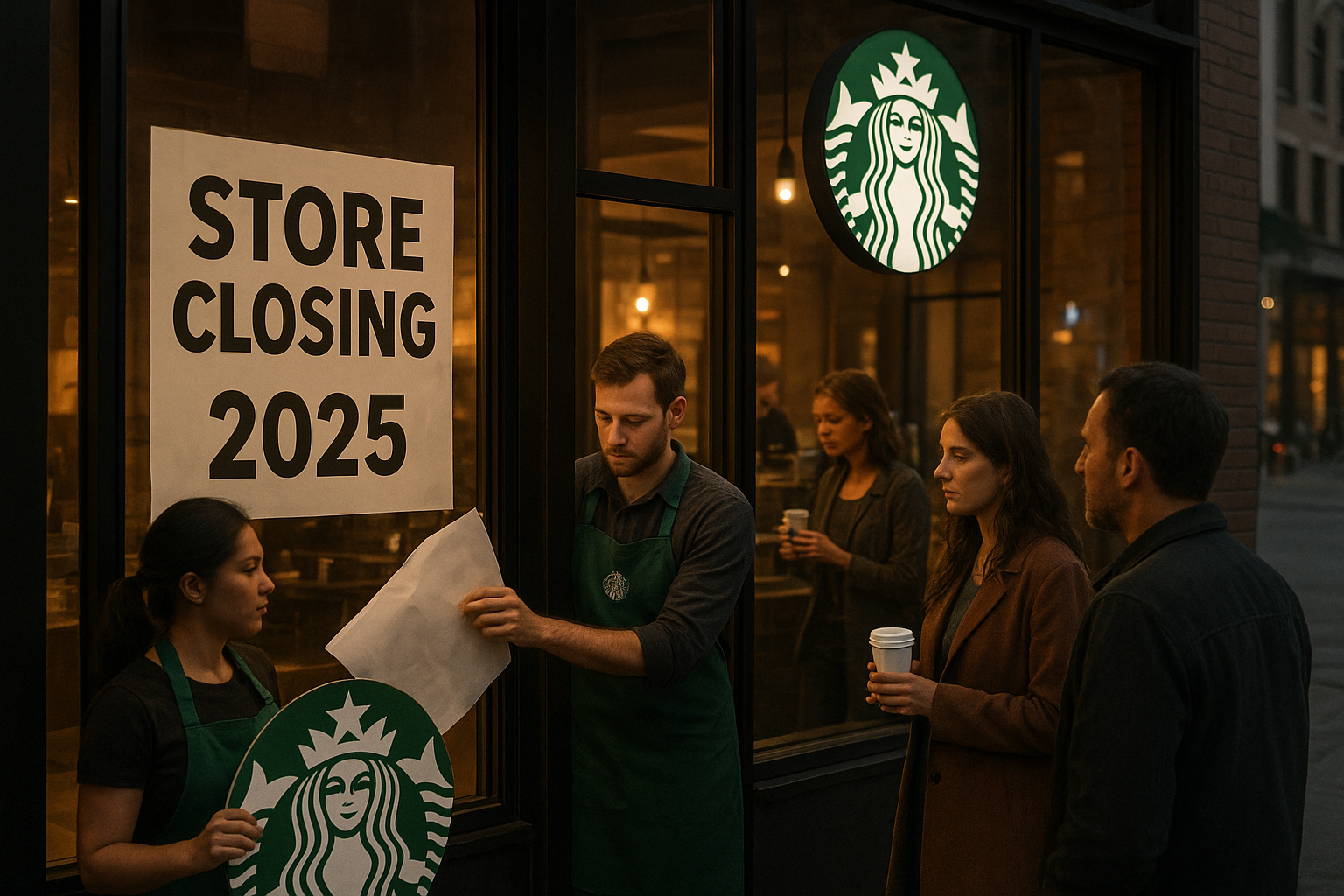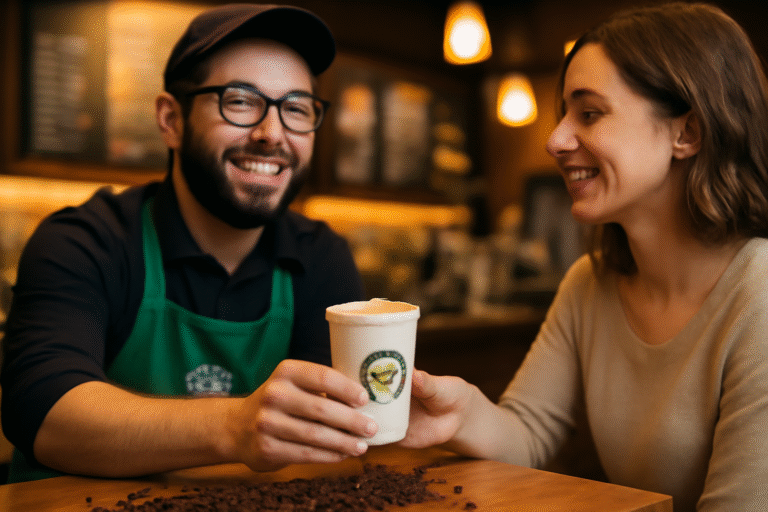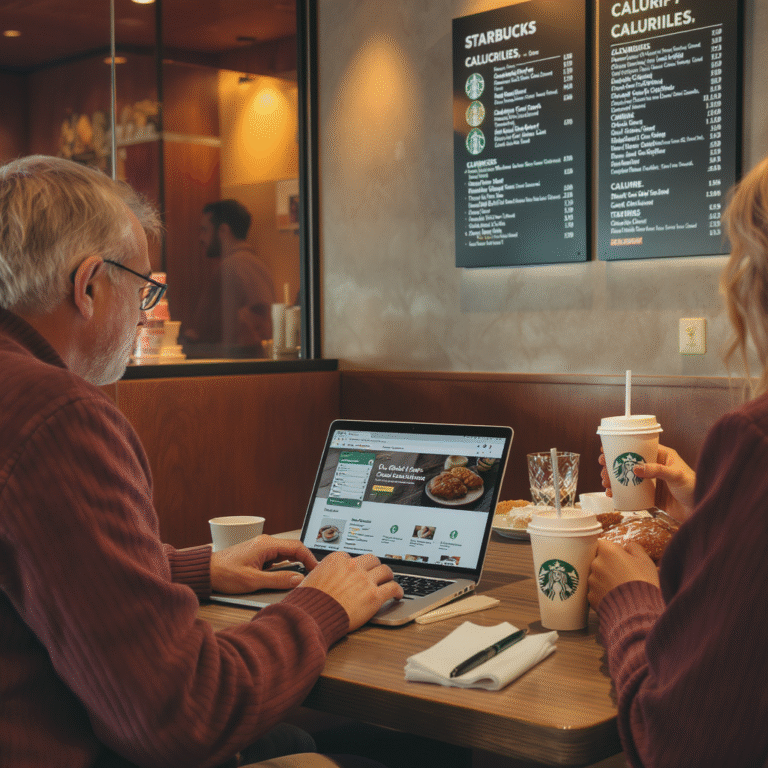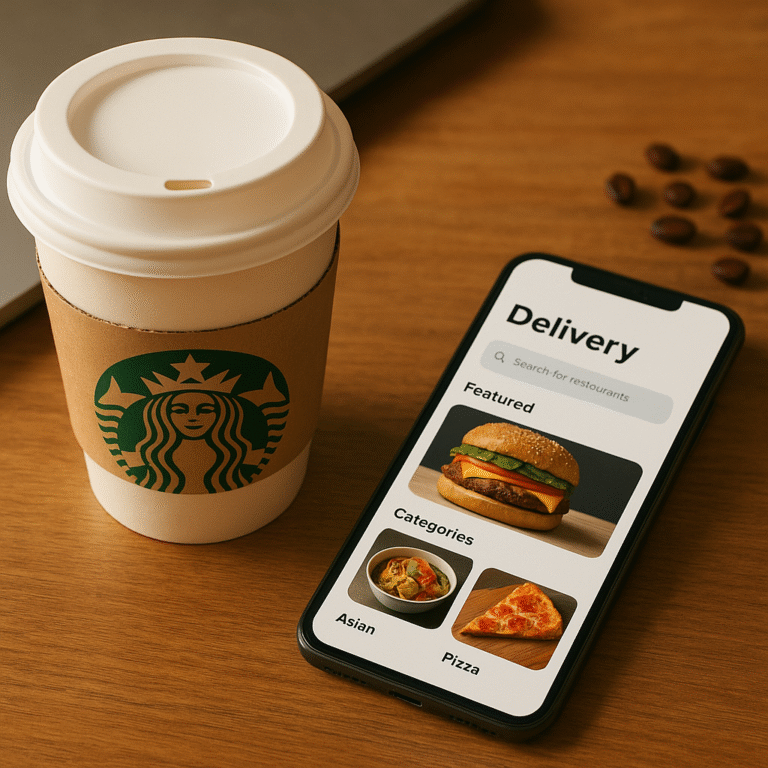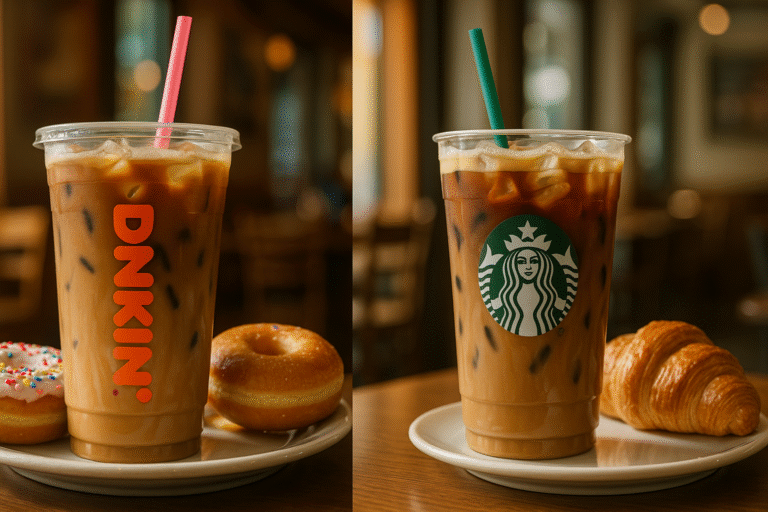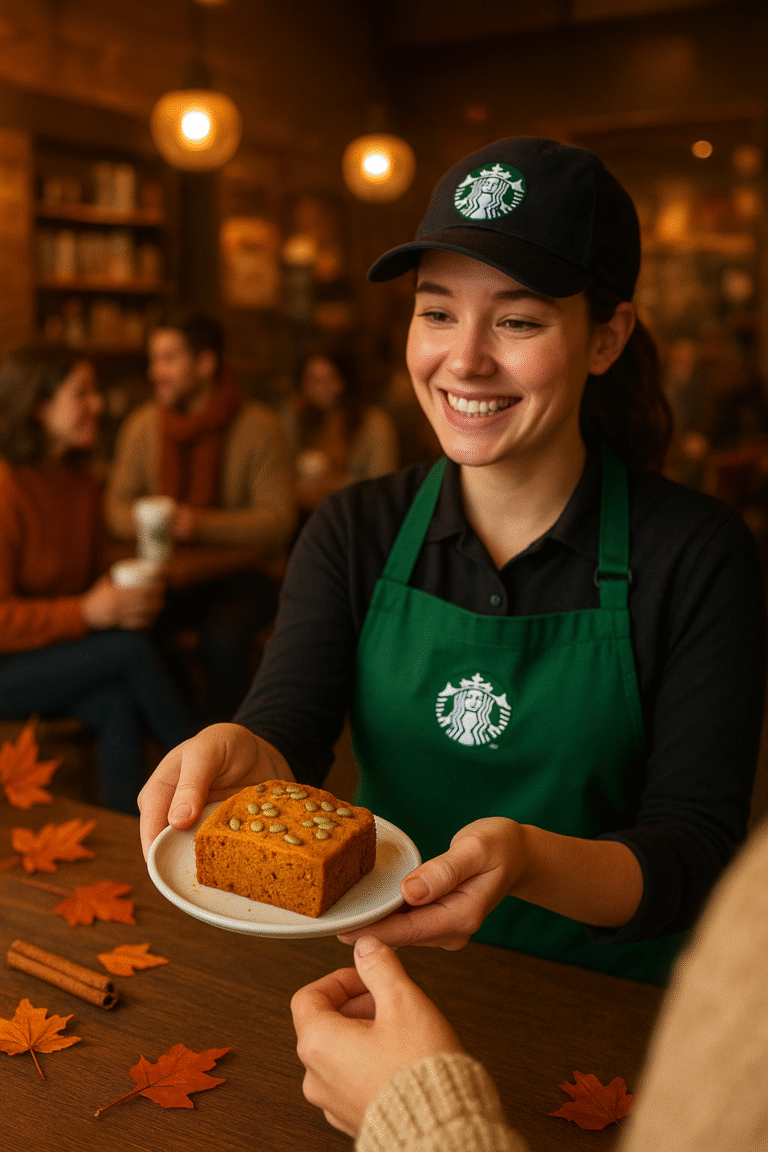Why Starbucks Is Closing Stores in 2025 What’s Really Happening?
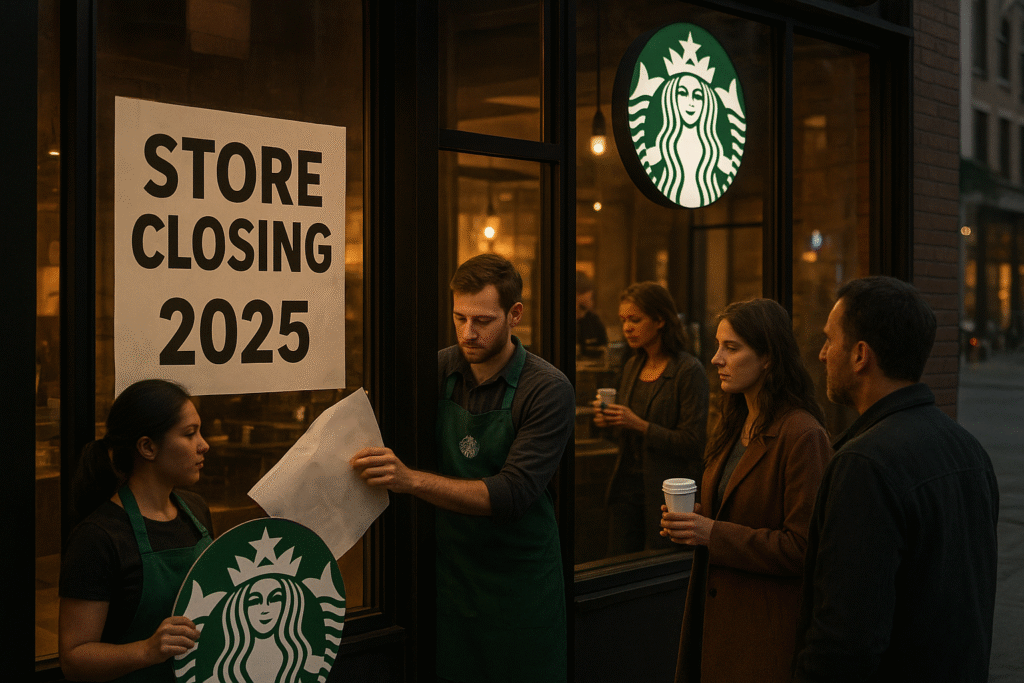
If you have spotted fewer Starbucks signs in your neighborhood or read about the news that Starbucks will be closing more stores in 2025, you’re not alone. It’s true the coffee giant has been busy making some big changes to when and where it does business this year. Before we all come to the conclusion that espresso-drinking is bad for you, however, it’s worth examining why this might be happening and what it actually means for your morning latte habit.
A Shift in Starbucks Strategy
Starbucks is not “dying out” not even close. In fact, the company remains one of the strongest coffee names worldwide. But in 2025, it’s really more about the restructuring exercise taking place. Not trying to grow forever now, Starbucks is questioning how its stores play in today’s consumer habits.
People’s coffee-buying behavior has changed a lot over the last few years. In the pandemic, remote work, mobile ordering and fast pickup became the new norm. So now, Starbucks is shuttering some underperforming or outdated locations particularly larger dine-in spaces and replacing them with smaller, leaner stores that are focused on pickups. If these new stores are built for speed, they are not created for lounging.
Focus on Safety and Staffing
Another reason for the closures is concern about employee safety. There are U.S. cities where Starbucks has acknowledged in public that its employees face safety challenges working certain locations. Rather than face unsafe working conditions, the company had chosen to close stores that couldn’t keep security threats in check, permanently.
In 2025, Starbucks no longer needs to monitor the areas affected by increased theft, vandalism and drug use. When those risks become threats to employees, the next step is taken by the company it closes said locations and moves somewhere nearby that’s slightly less dangerous. “These changes are part of our long-term plan to enhance the partner and customer experience,” a Starbucks representative said recently. That translates to fewer dicey spots and more modern, tech-heavy ones.
Technology Is Propelling the Next Chapter
Step into a Starbucks today and it already looks different than it did five years ago. Fewer people are waiting in line and more mobile orders are flashing on the pickup counter. By 2025, more than 60 percent of Starbucks orders in the U.S. are processed digitally through the app or via delivery platforms like Uber Eats and DoorDash. That has spurred Starbucks to completely redesign its store model. The company is investing in:
- Drive-thru-only stores
- Dense urban pickup counters
- Self-serve beverage stations so you can get refills quickly and others will never be slow
So when Starbucks shuts down a large, older café-style store, the company is usually going to open two smaller tech-centric ones somewhere in the area. It’s not downsizing it’s redefining.
Employee Unionization and Policy Changes
Unions have also played an ongoing role in Starbucks closures. Hundreds of U.S. stores over the past few years have voted to unionize, protesting for better pay and working conditions. And in some instances, Starbucks has shuttered units that were targeted by union disputes and cited “operational reasons.” Critics say this is the company’s effort to fight the union wave, but Starbucks denies that. As of 2025, Starbucks is still in talks with union representatives and closures related to these situations do still happen from time to time, although these locations typically also have other logistical issues.
Starbucks Is Not the Only One Opening New Types of Stores
Here’s the part that people often forget: While Starbucks is closing hundreds of stores, it’s also opening hundreds more just not your typical kind of store. Imagine drive-thrus on highways, express locations at airports and universities and pickup-only stores in city centers. In fact, in 2025 alone, Starbucks intends to open more than 500 new stores across the world and many of these are from emerging markets such as India, Southeast Asia, and Latin America.” So the closures are really about cutting back old limbs to help the tree grow stronger.
Customer Response Mixed but Optimistic
Not everyone, of course, is pleased. For some particularly in small towns there is a sense of loss when their local Starbucks closes. And for a lot of people, that store is more than just good coffee it’s where they studied, worked remotely or caught up with friends. But others see the upside. The newer Starbucks are faster, cleaner, and more tech-friendly. Mobile pickup is slicker, and drive-thrus are even expanding in some cities with dense traffic. So as the vibe evolves, the brand is adjusting to modern habits.
What It Means for Starbucks Lovers
So if your favorite Starbucks suddenly vanishes in 2025, don’t worry. It’s typically being surpassed by something more efficient nearby. Starbucks still has more than 38,000 locations around the world, and it looks like that number will only continue to rise in savvier, more digitally connected ways. The future of Starbucks has little to do with where you sit, and a whole lot more about how you order. Whether it’s a drive-thru coffee with your car, a pickup latte between meetings or a delivery to your doorstep, Starbucks wants to be where you are.
Why is Starbucks closing stores in 2025?
Starbucks is not shutting down entirely it’s only closing select stores that are underperforming or located in areas where customer visits have dropped. The company’s main focus is shifting toward new digital-friendly stores, drive-thrus, and pickup-only locations to serve customers faster and more efficiently.
How many Starbucks stores are closing in 2025?
As of early 2025, Starbucks has announced the closure of around 600 to 800 stores across North America. Most of these closures are part of a long-term plan to optimize store locations and open nearly 1,000 new concept stores by the end of the year.
Which Starbucks stores are closing in the U.S.?
While Starbucks hasn’t released a full public list of every store, reports confirm closures in cities like San Francisco, Portland, Seattle, Los Angeles, and New York City mainly downtown or high-rent areas affected by lower foot traffic and safety concerns.
Are Starbucks stores closing worldwide too?
No, not globally. The closures are mostly in North America, particularly the U.S. and Canada. In fact, Starbucks is expanding in Asia and the Middle East, where customer growth remains strong.
Will my local Starbucks close?
The best way to find out is to check the official Starbucks store locator or contact your local store. Locations inside major malls or airports usually stay open, while smaller downtown shops are the ones more likely to close.
What is Starbucks opening instead of traditional stores?
Starbucks is opening pickup-only stores, drive-thru-only locations, and AI-powered coffee stations. These modern stores are designed to serve mobile app orders and reduce long lines, especially during peak hours.
Is Starbucks losing money?
No, the closures don’t mean Starbucks is failing. The brand remains profitable but is restructuring its store network to match customer behavior people are ordering online more and spending less time inside cafés.
How will these closures affect employees?
Starbucks says affected employees will be offered relocation or transfer opportunities to nearby stores. The company also continues to invest in staff training and new digital tools.
When will the Starbucks closures happen?
Most closures are scheduled to finish by mid to late 2025, though some will happen gradually depending on lease terms and local conditions.
What’s next for Starbucks after 2025?
After completing its reshuffle, Starbucks plans to focus heavily on sustainability, AI-driven ordering, and personalized drinks aiming to become the world’s most digitally connected coffee brand.

